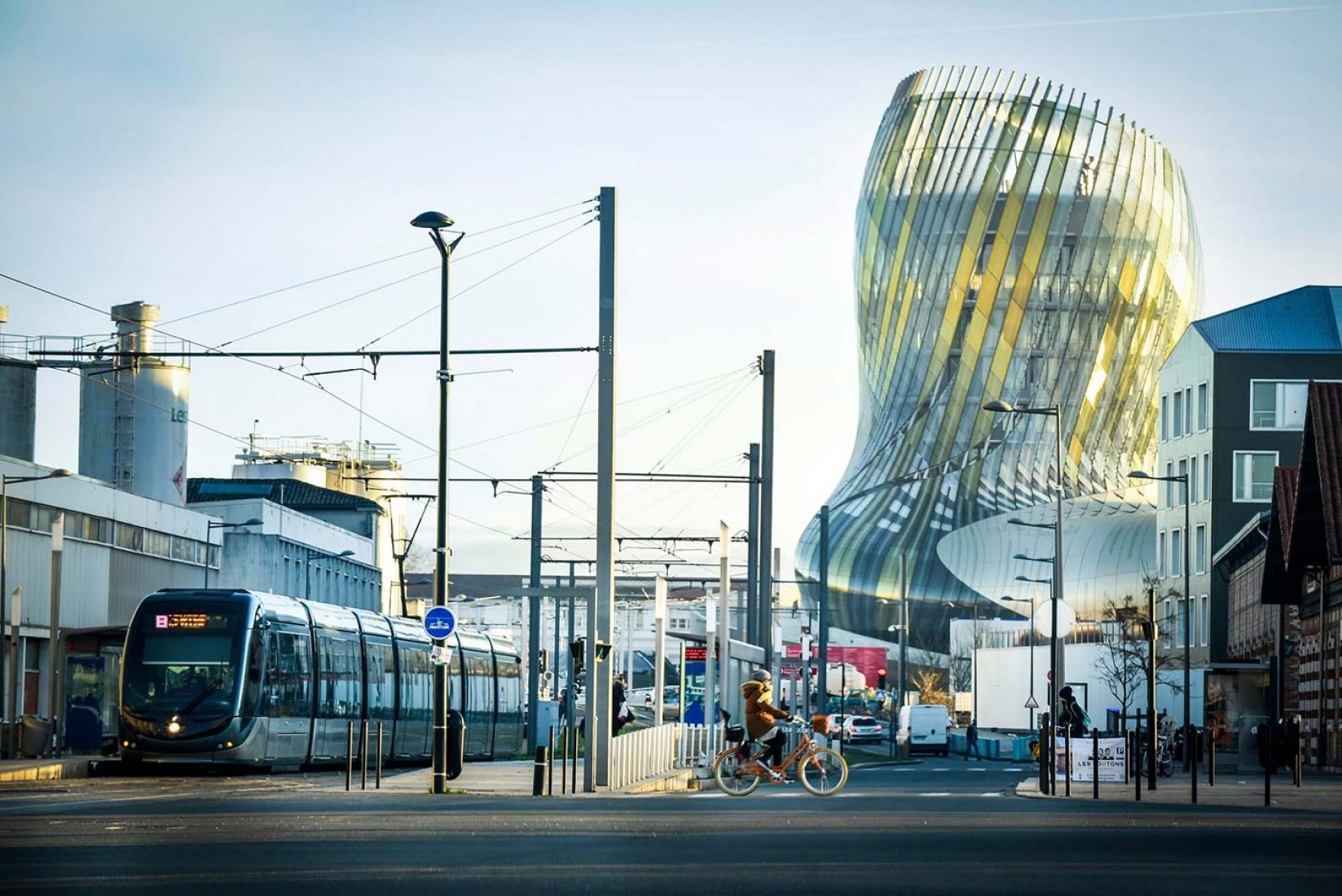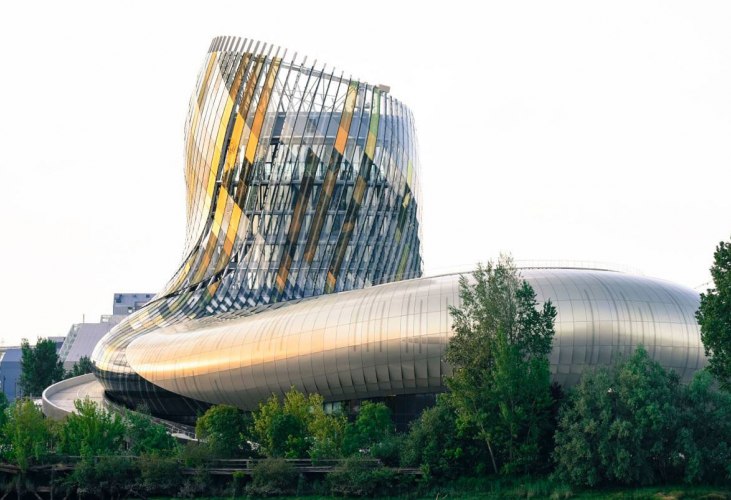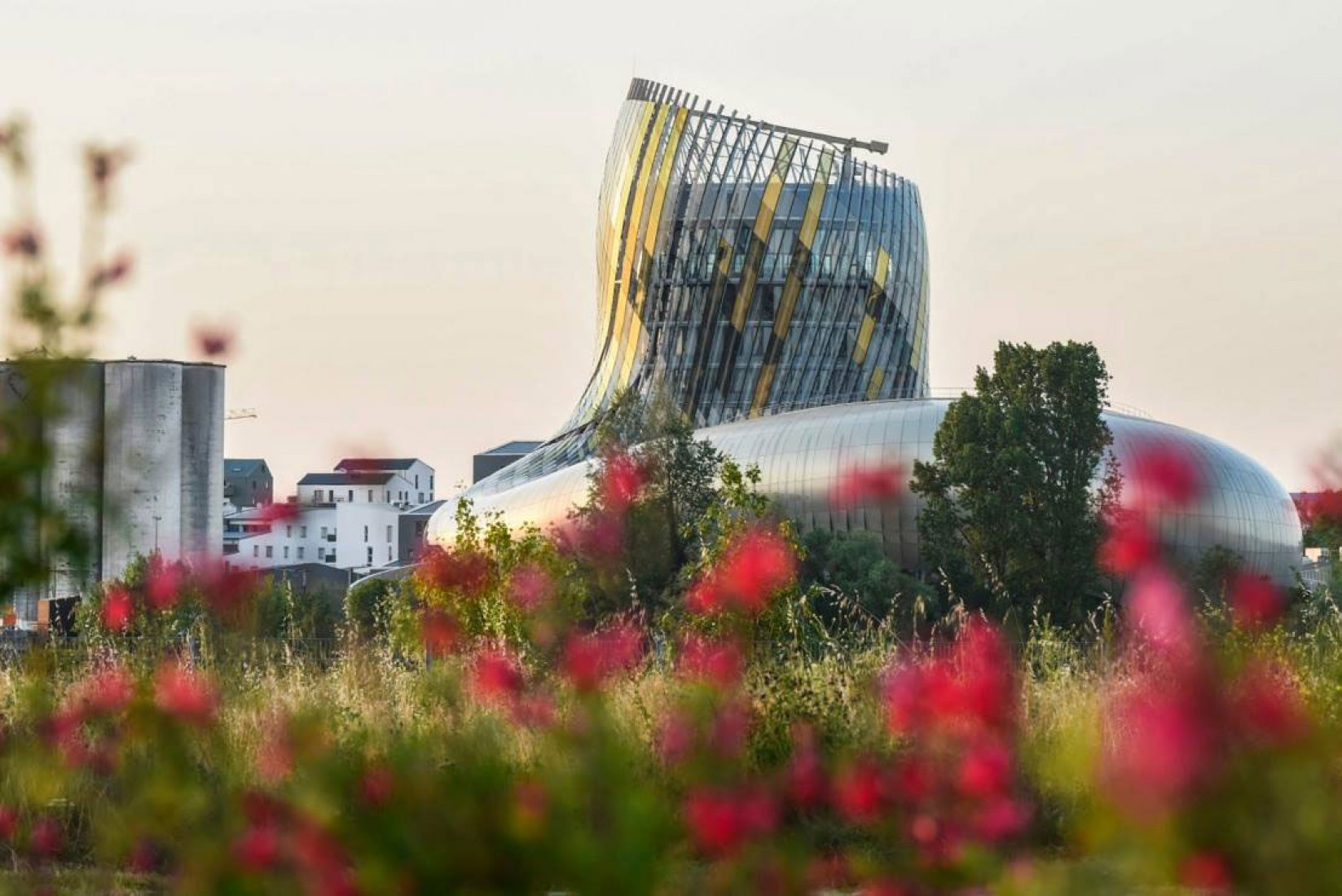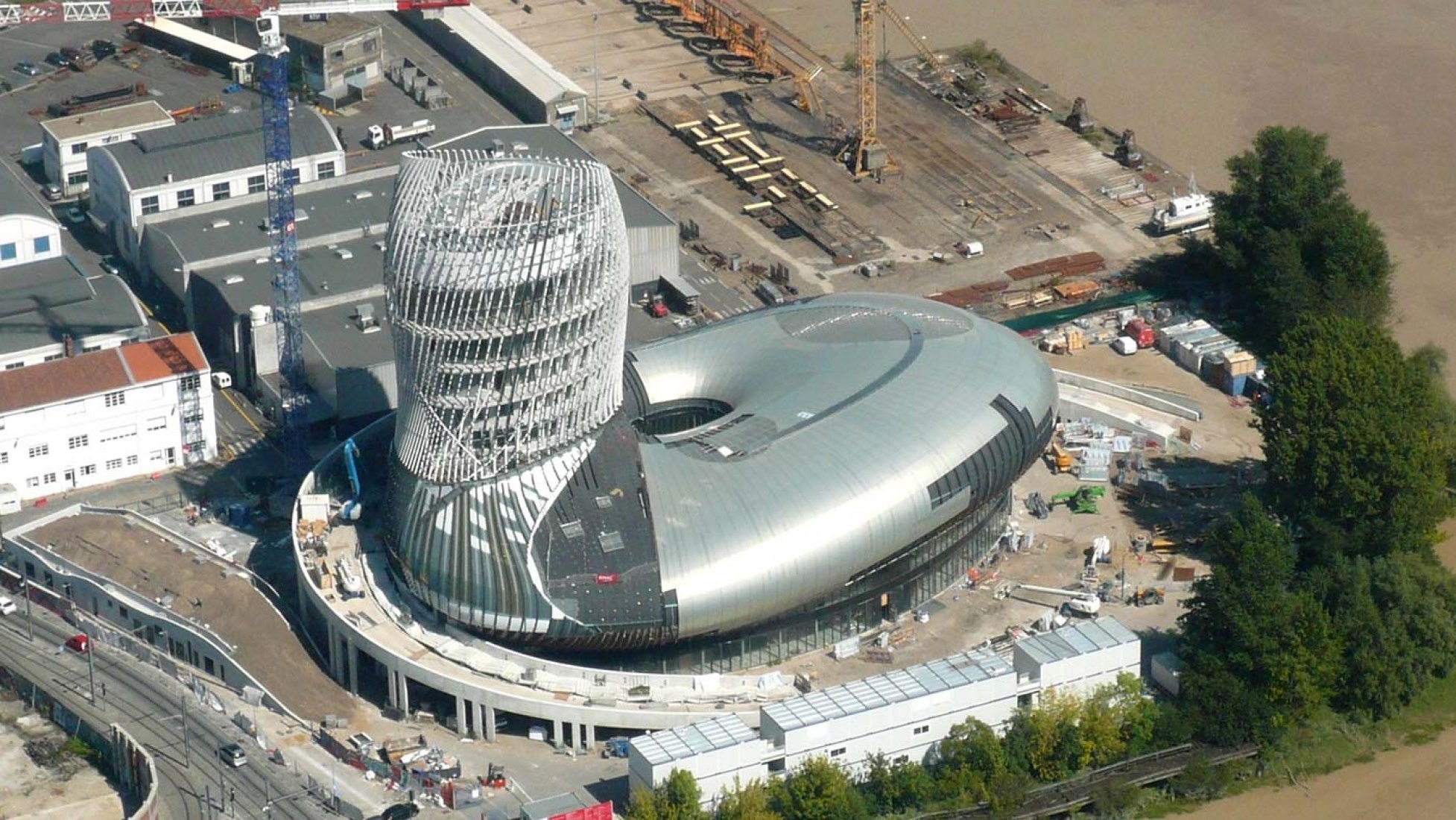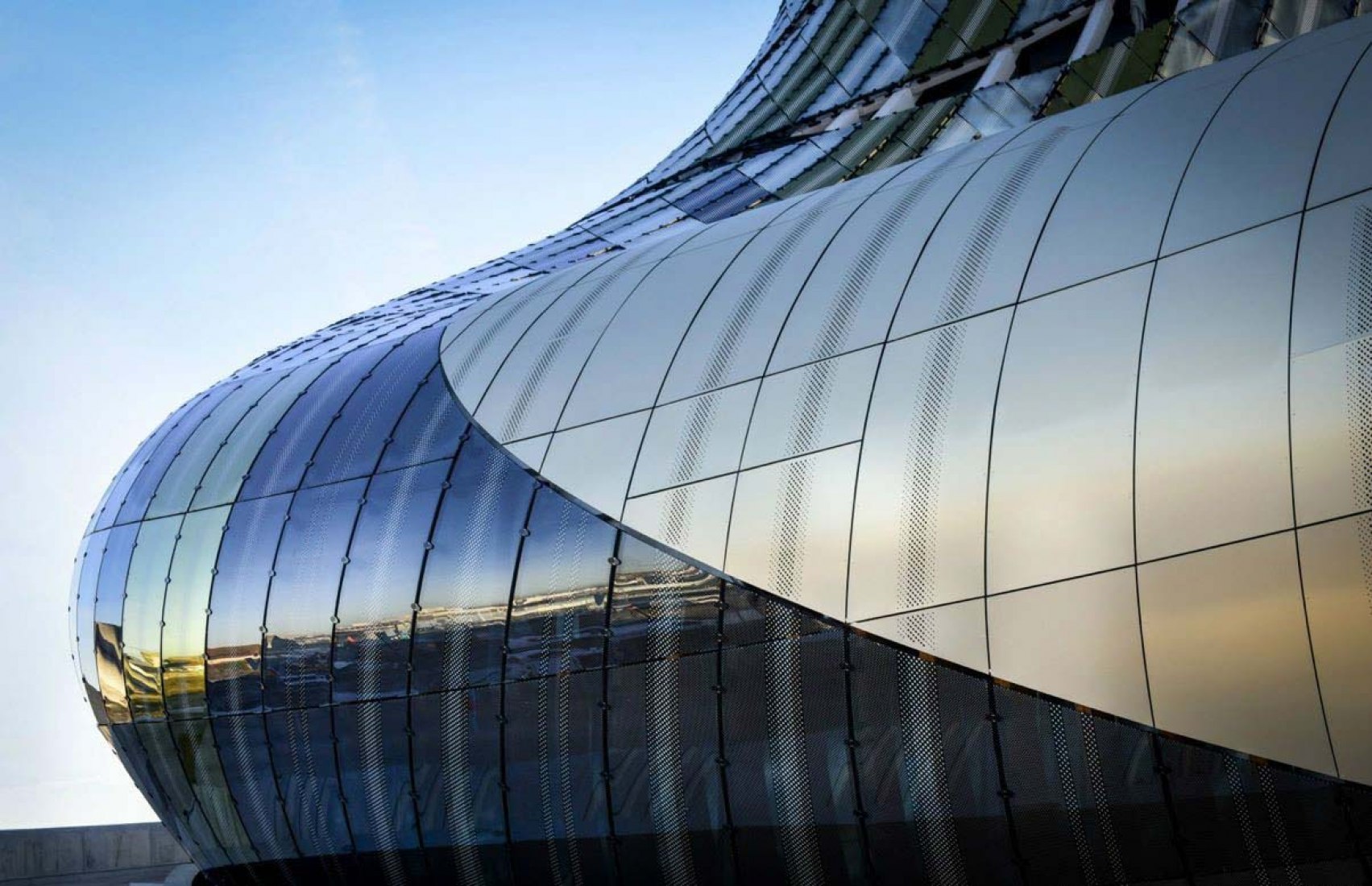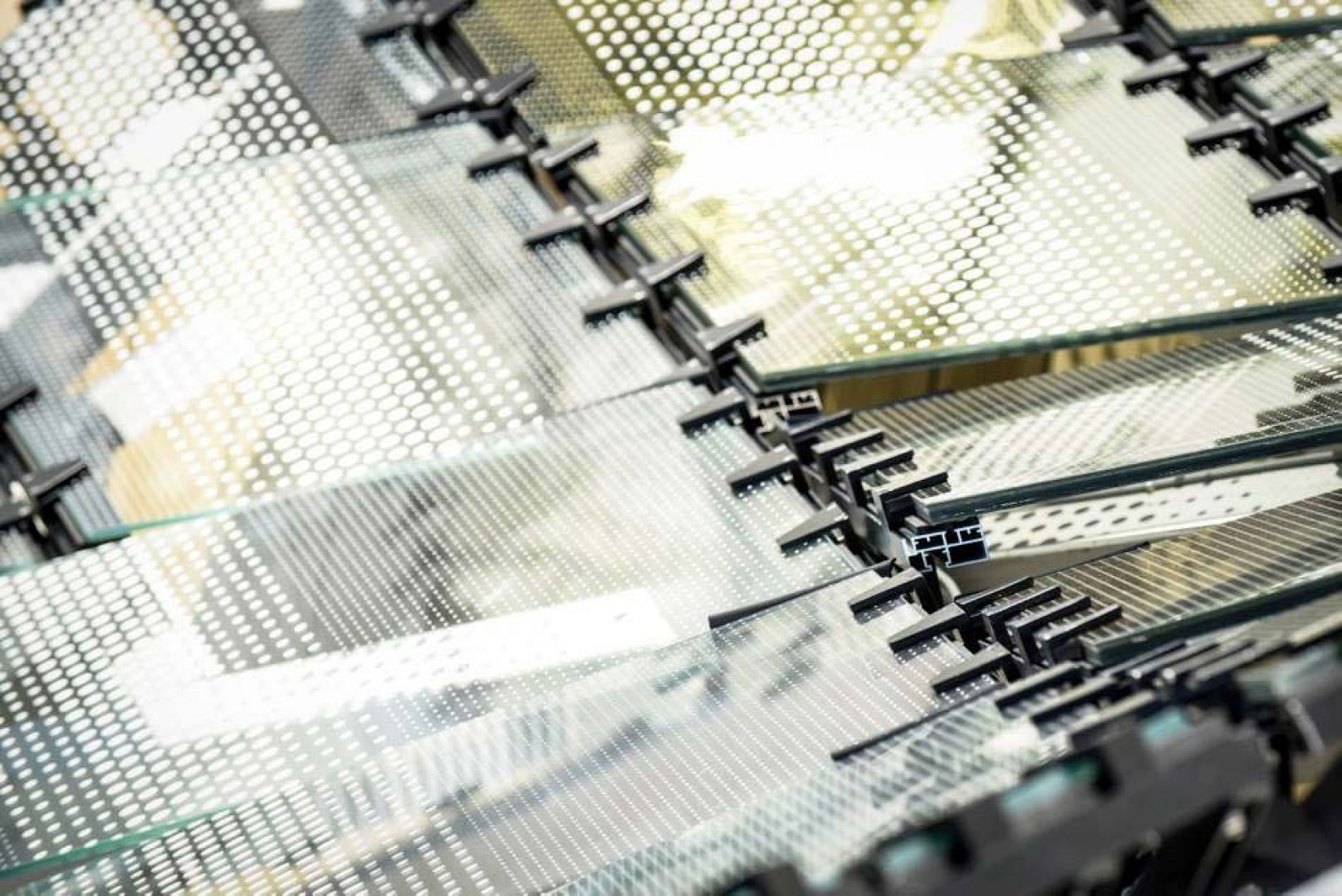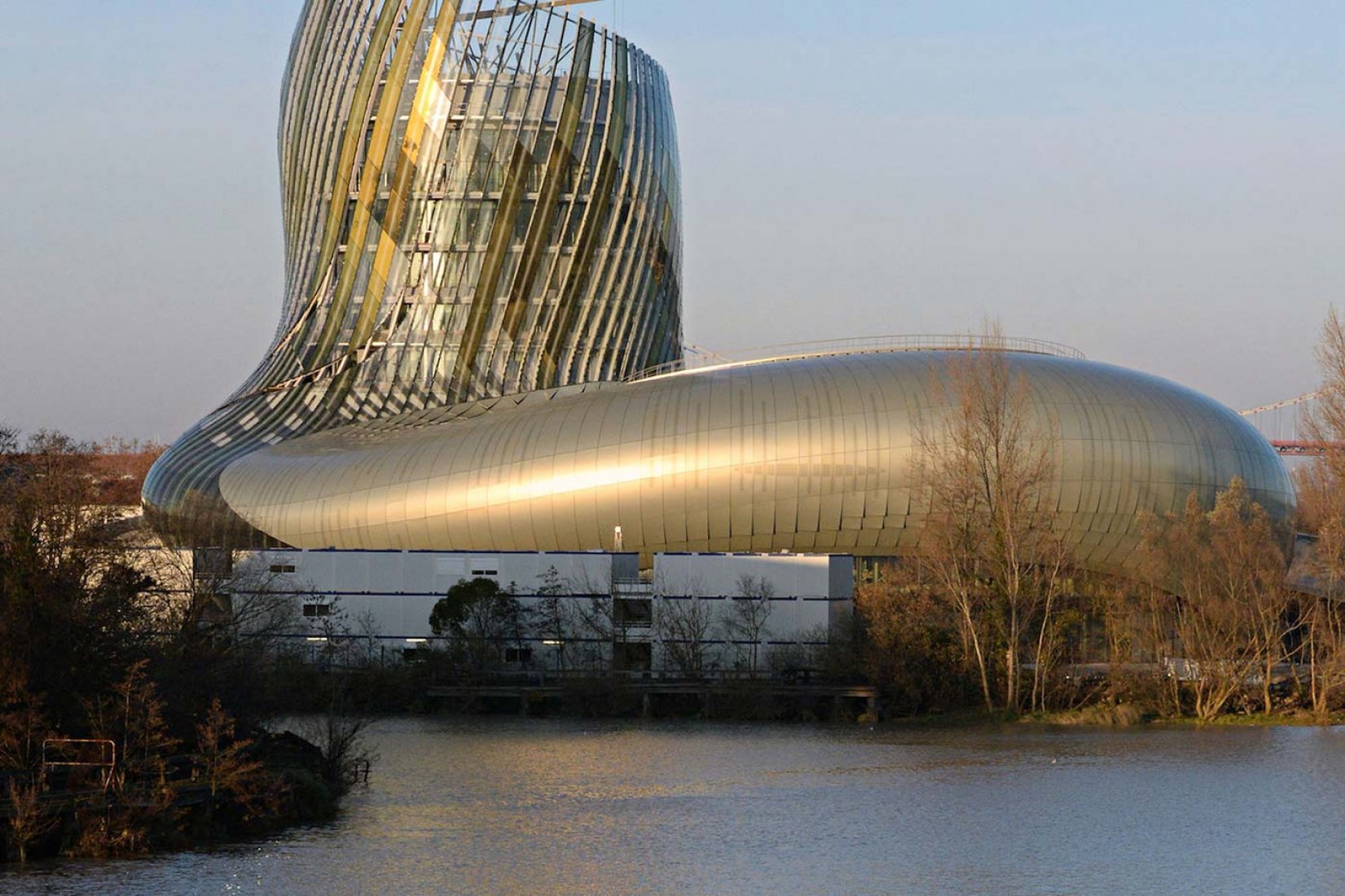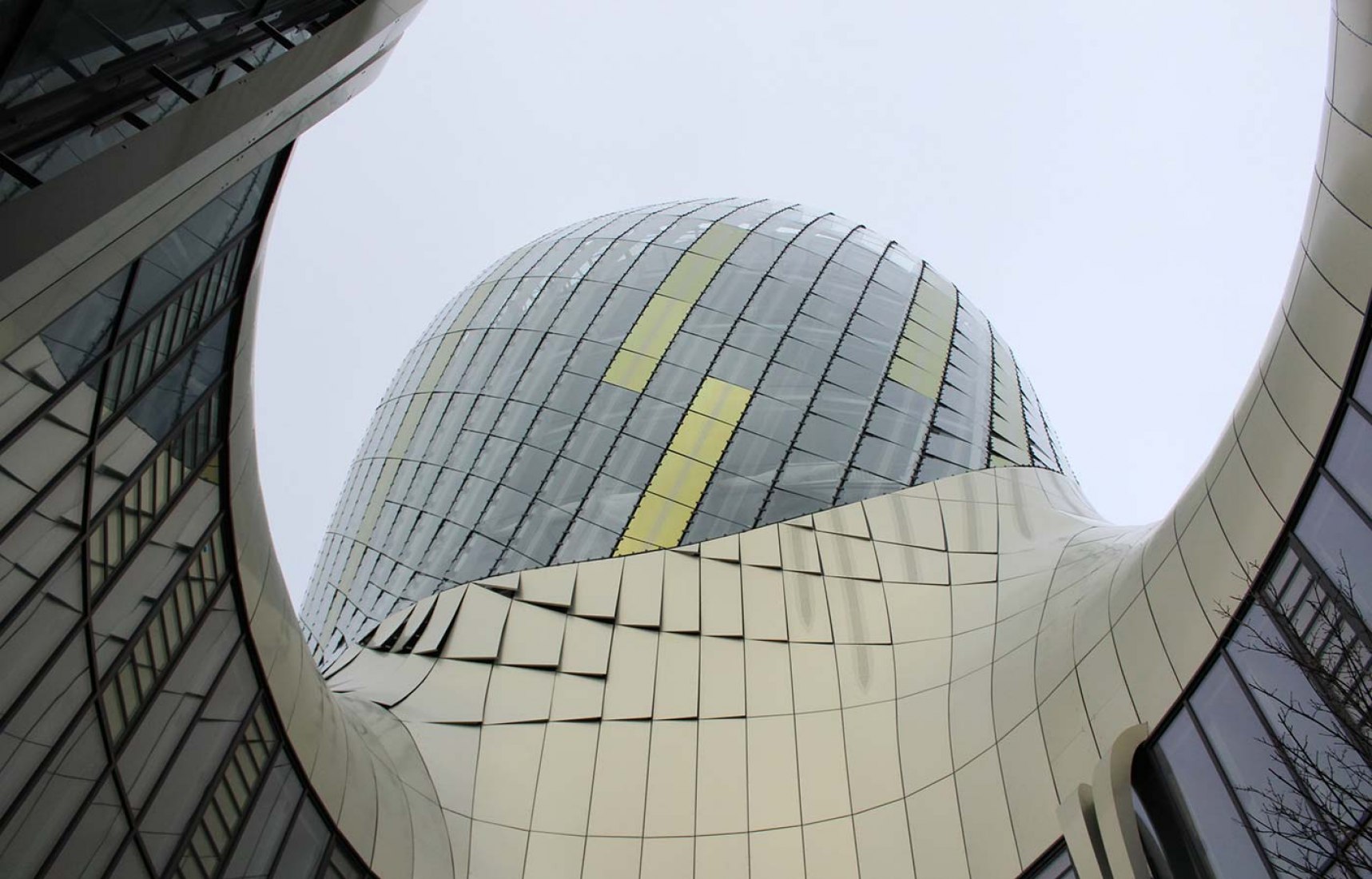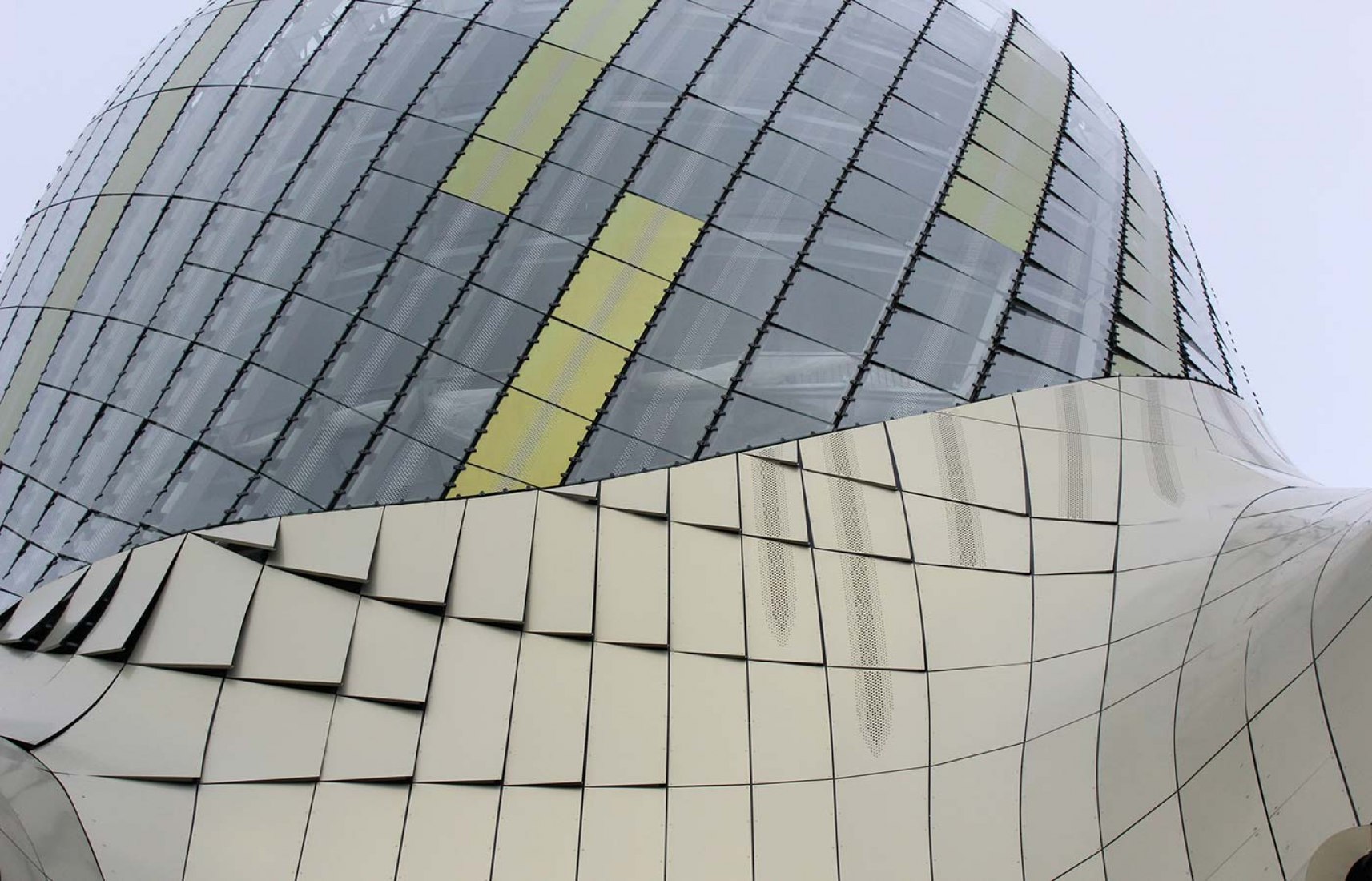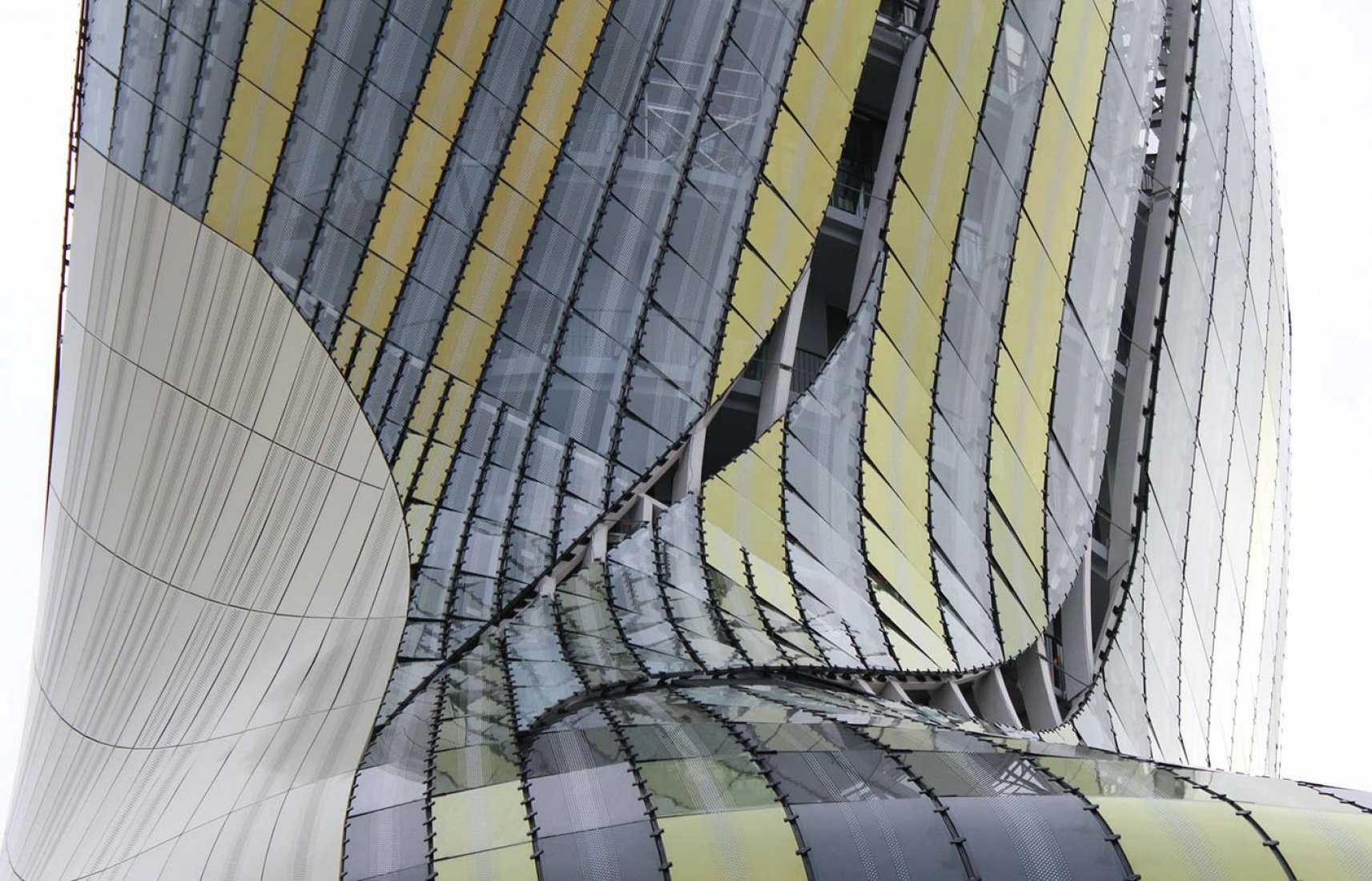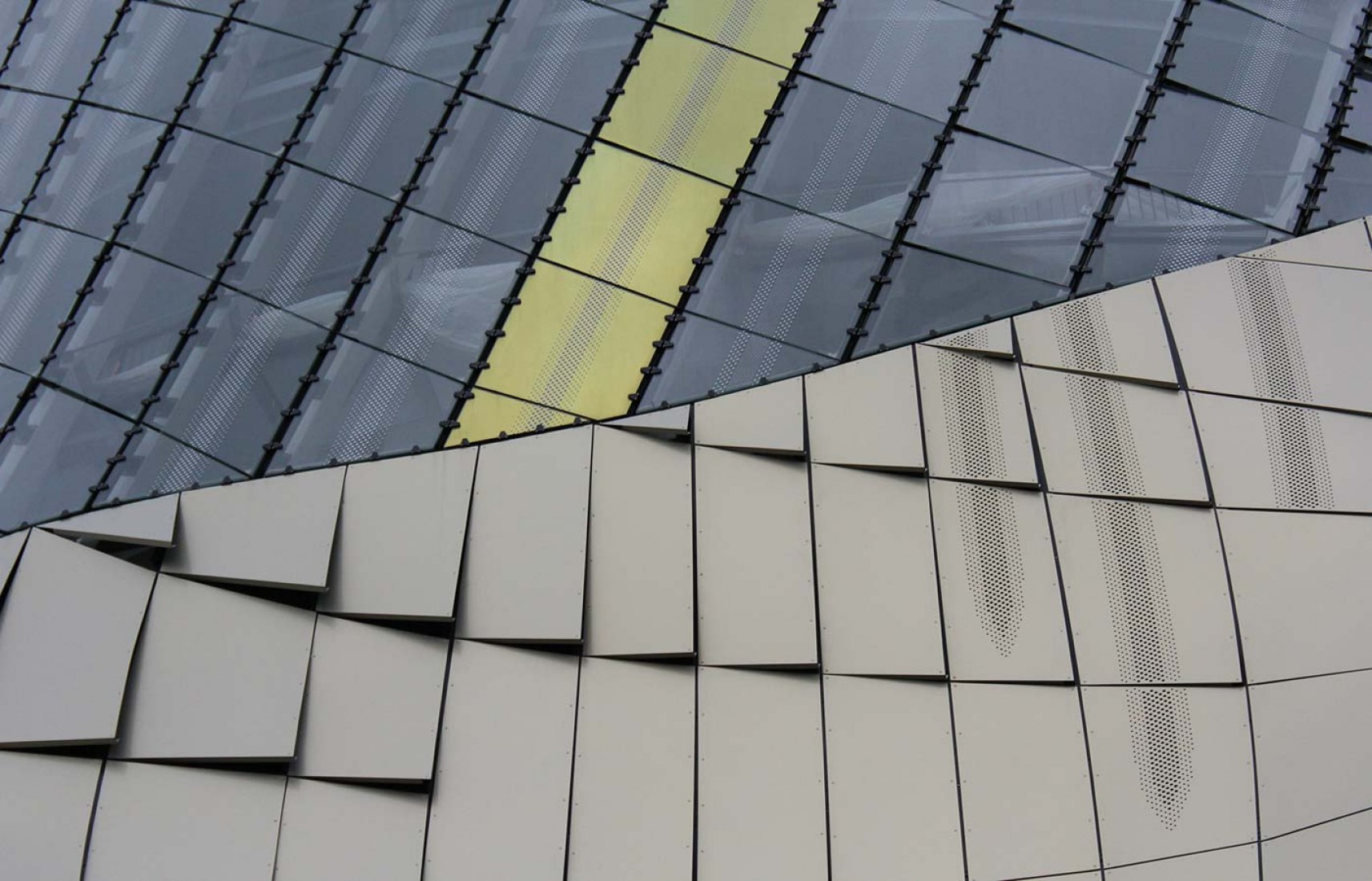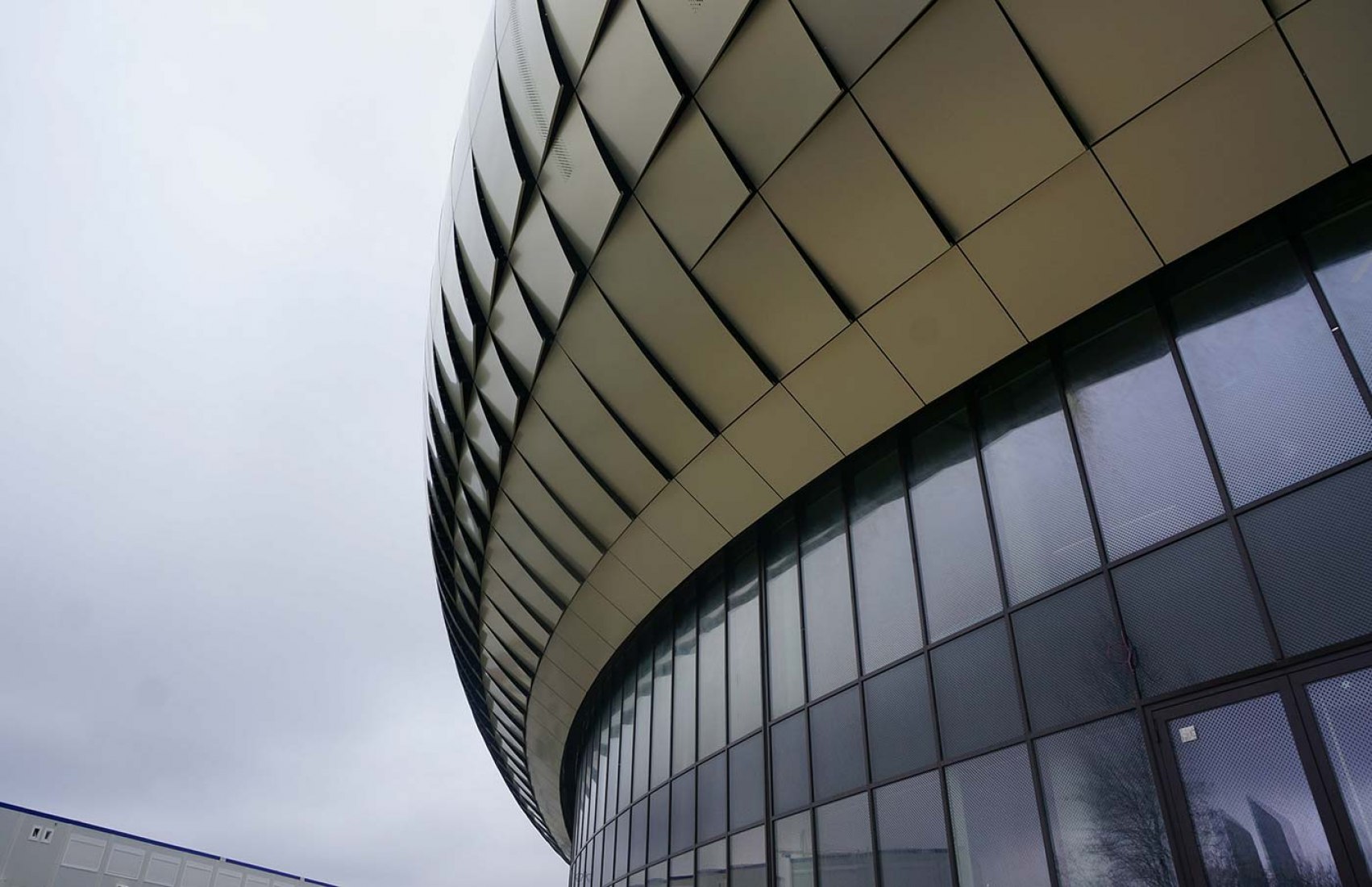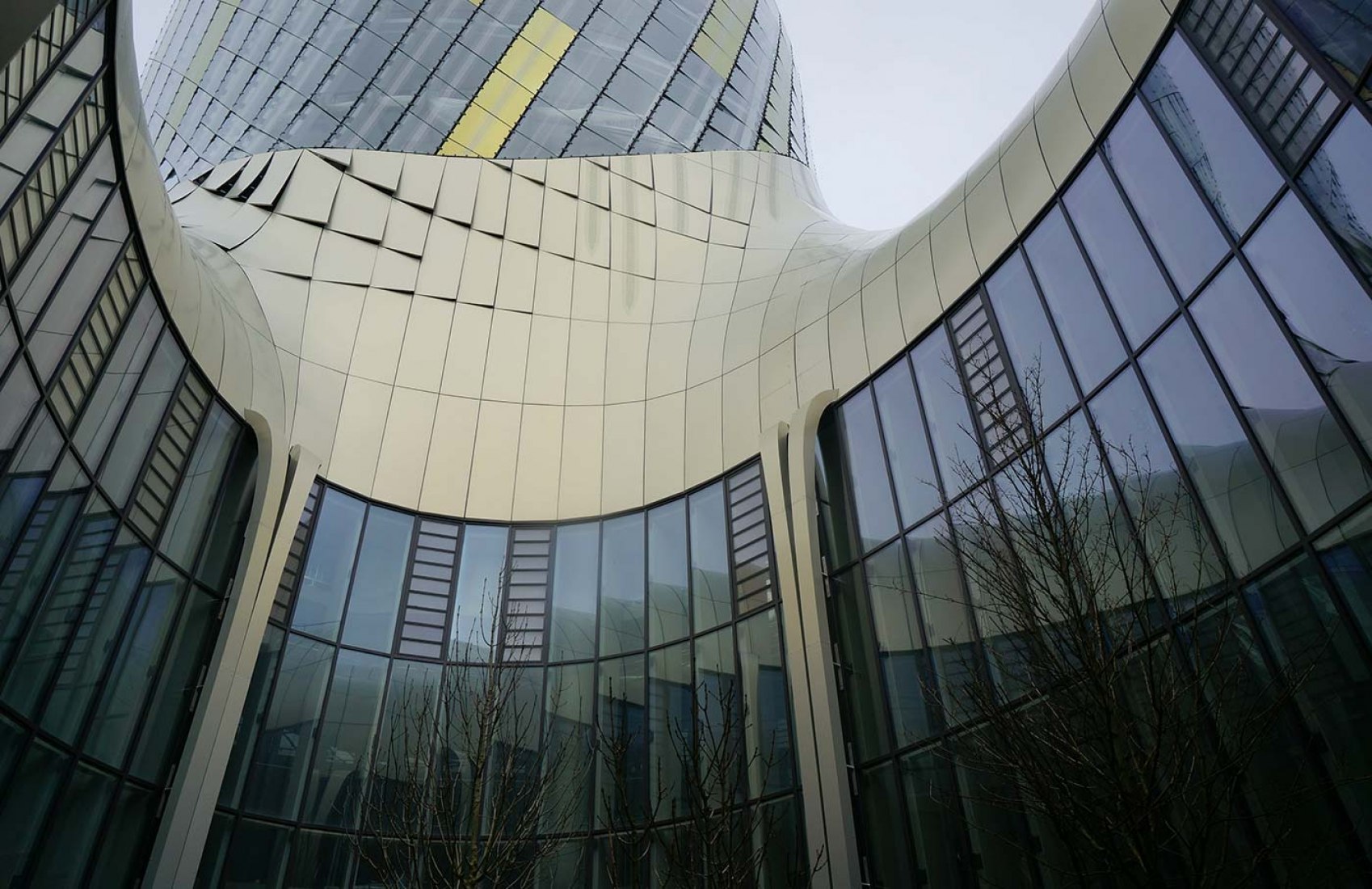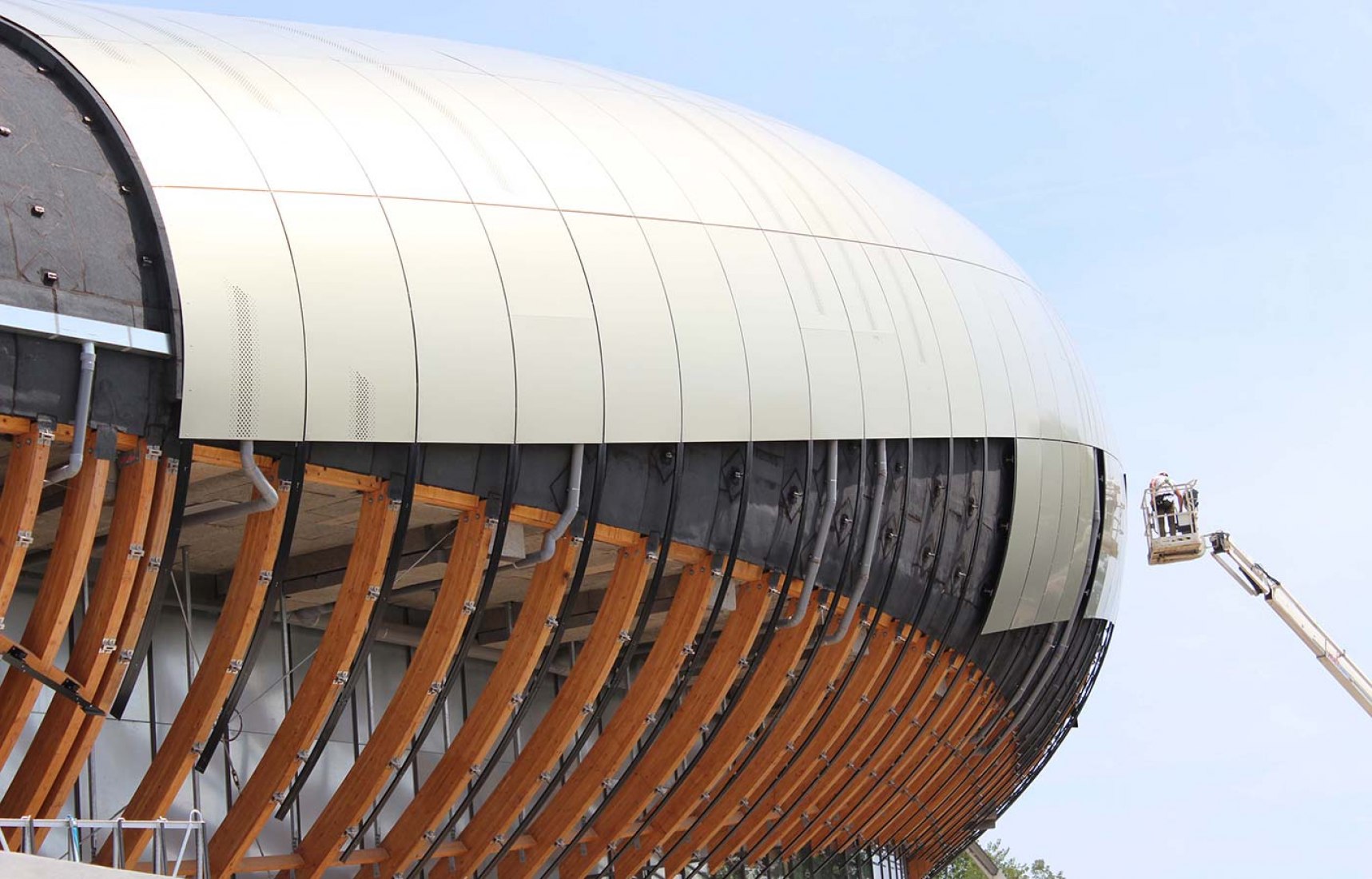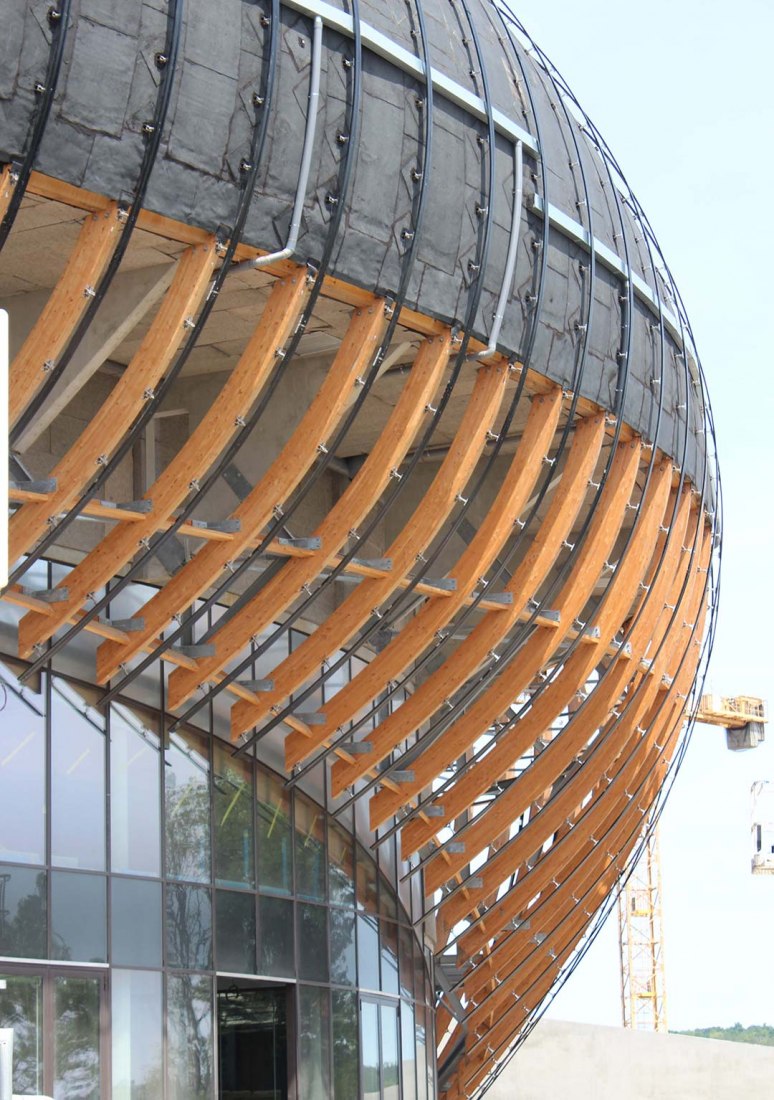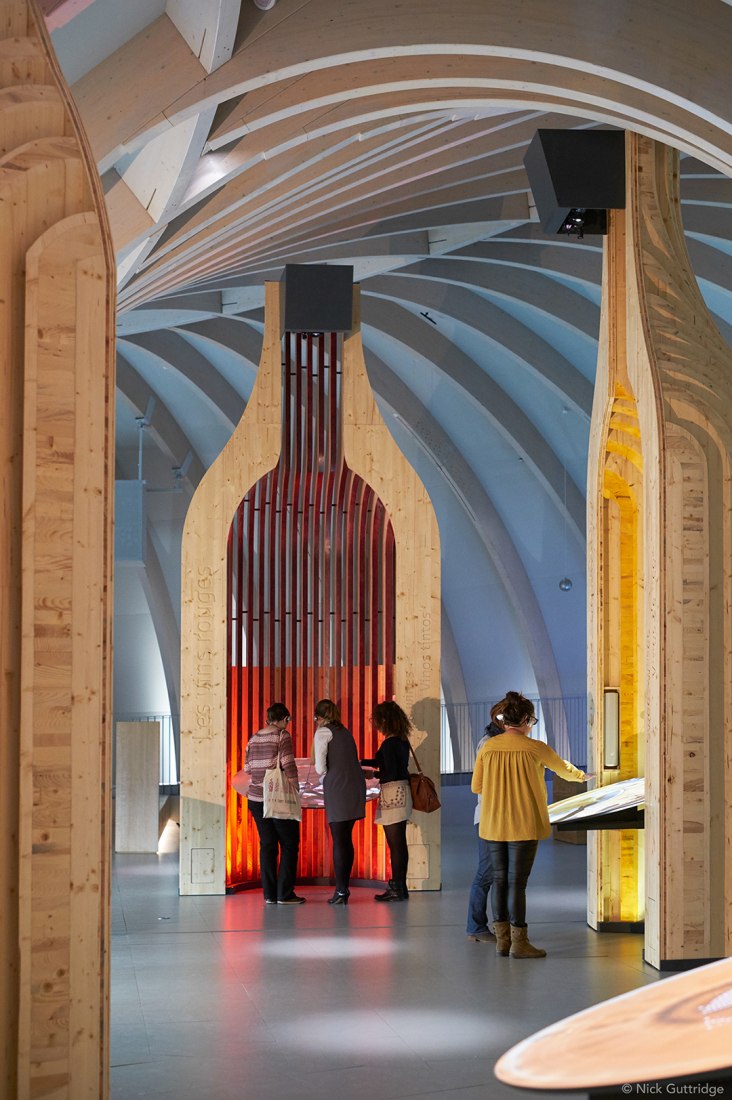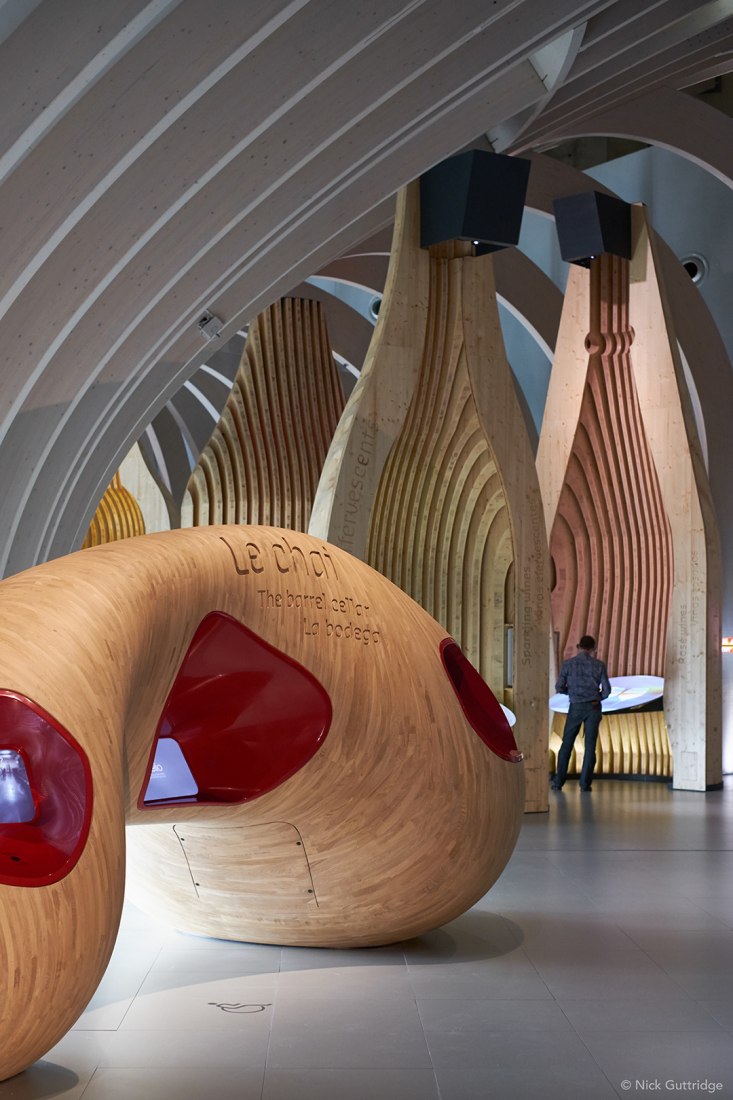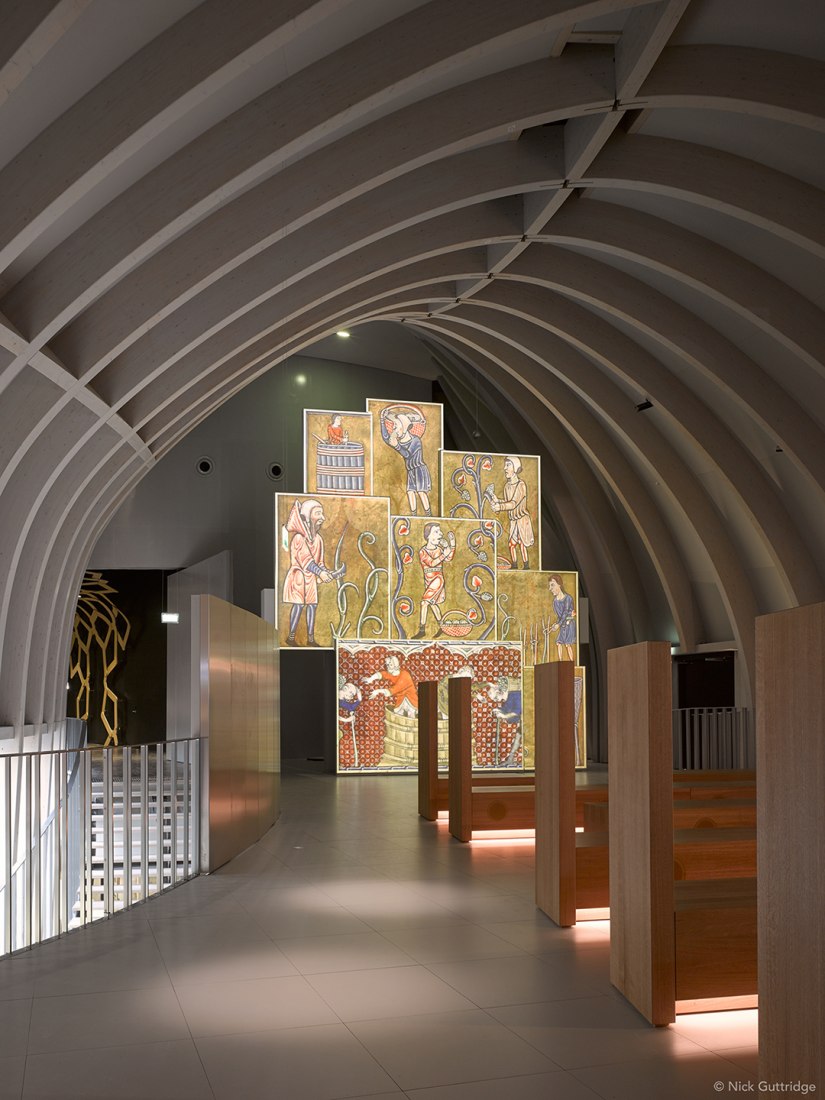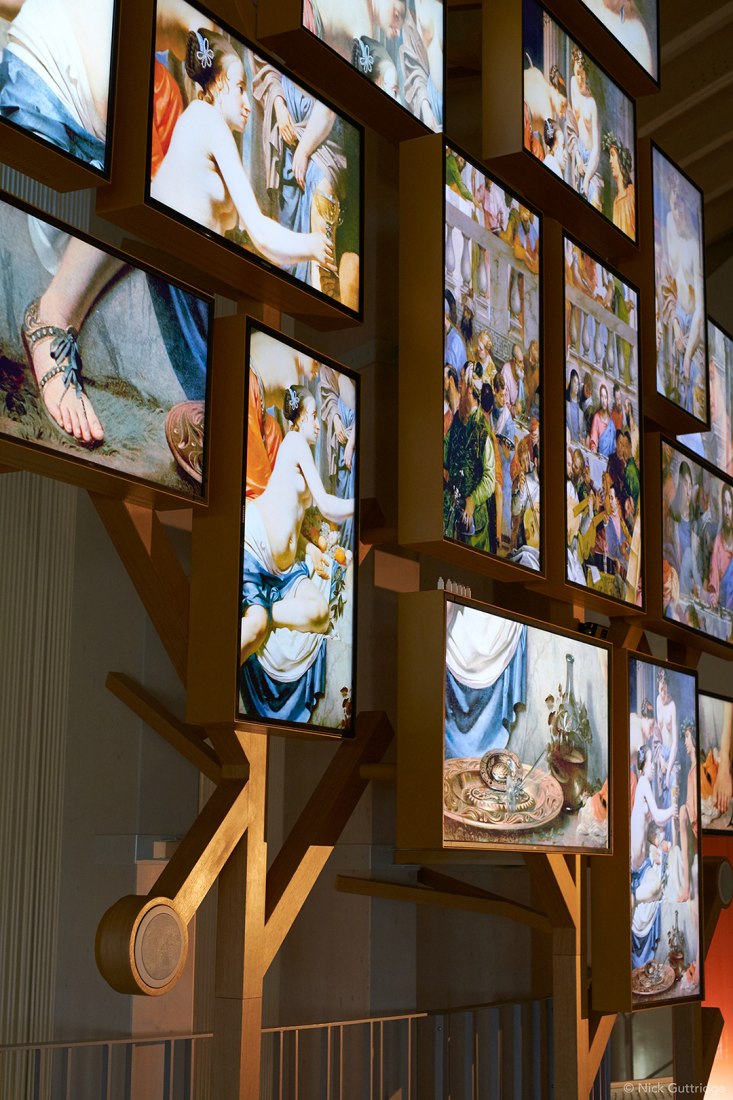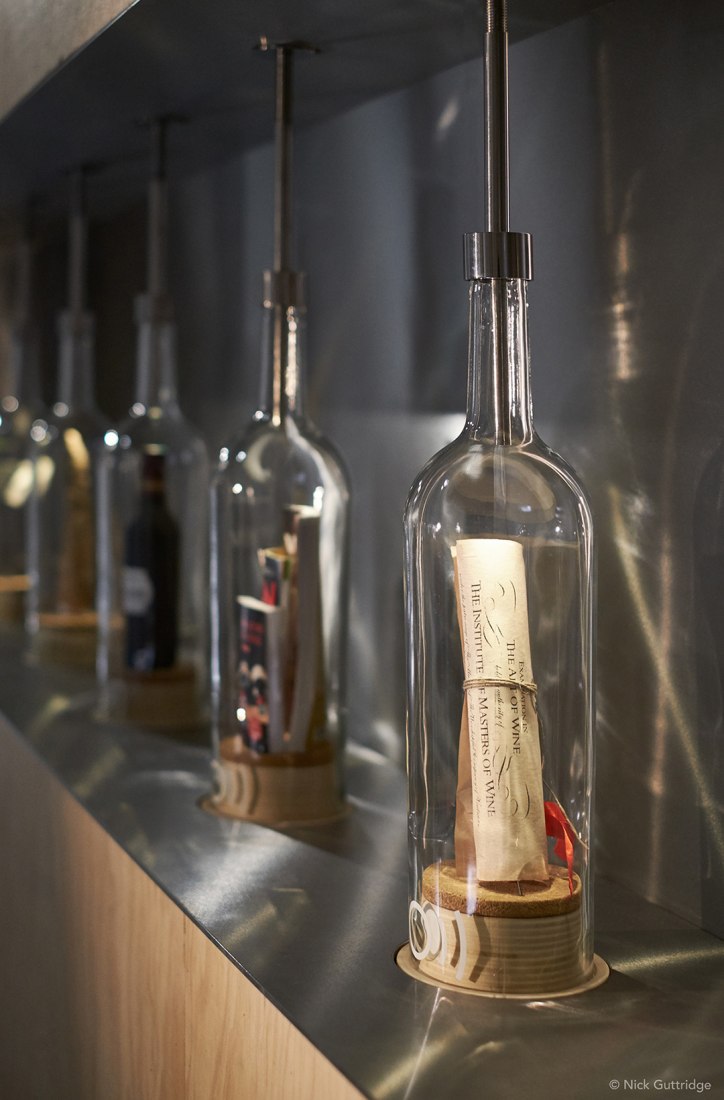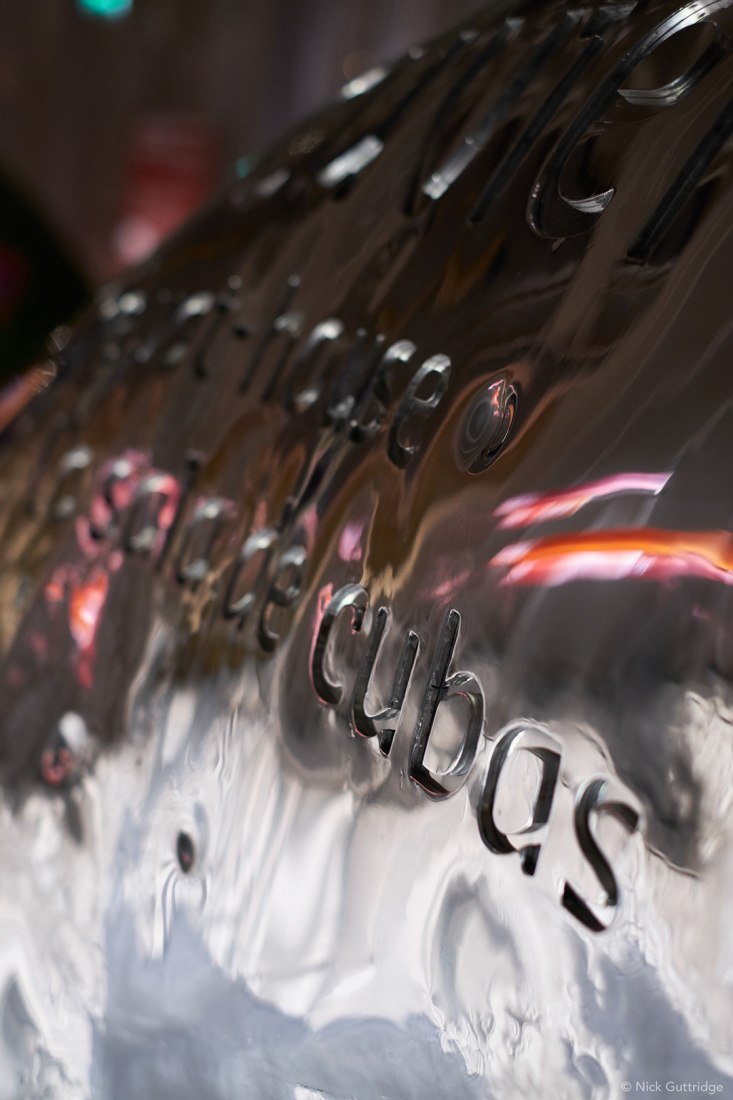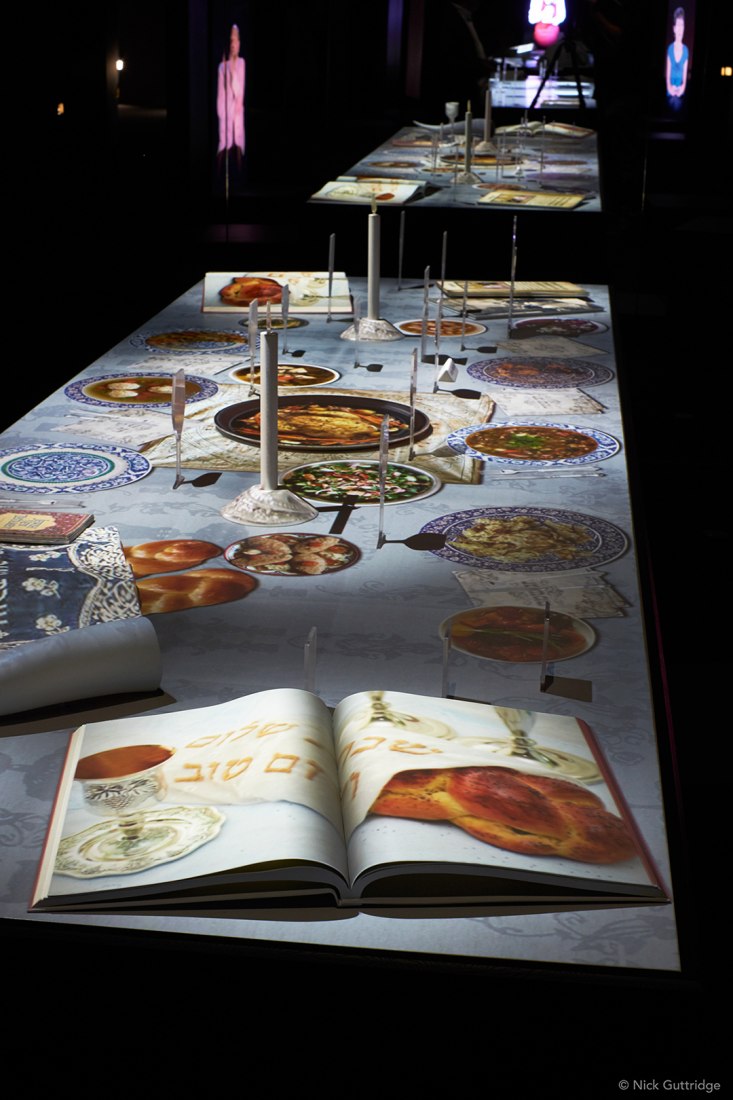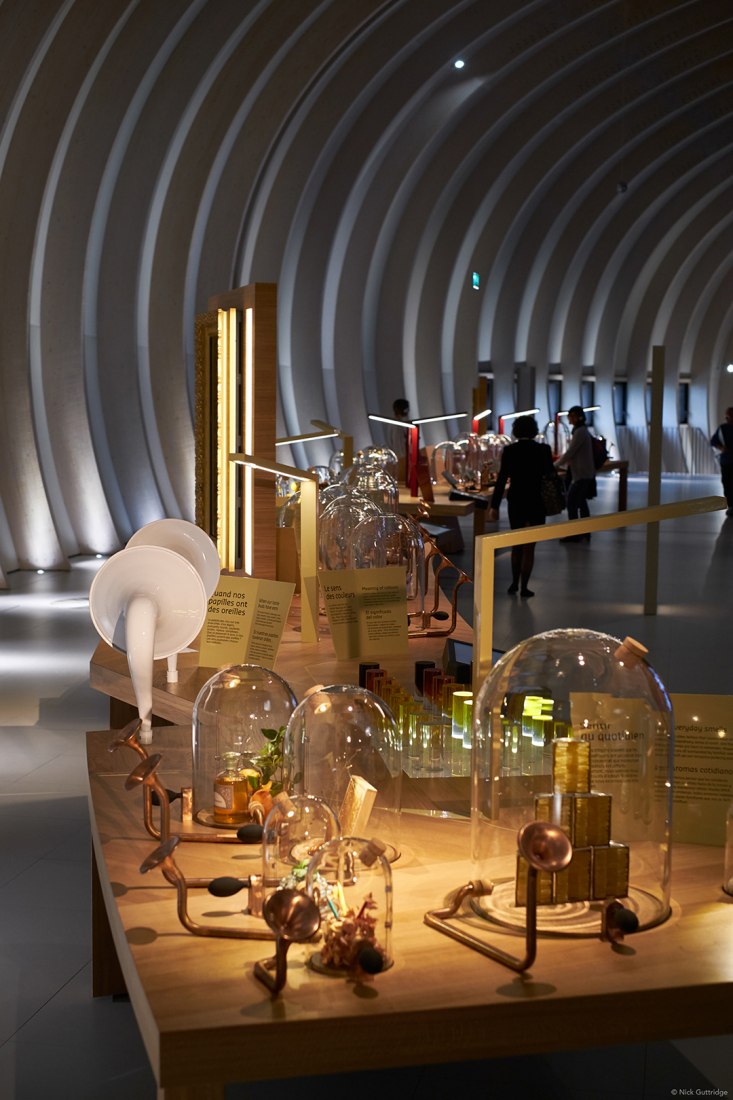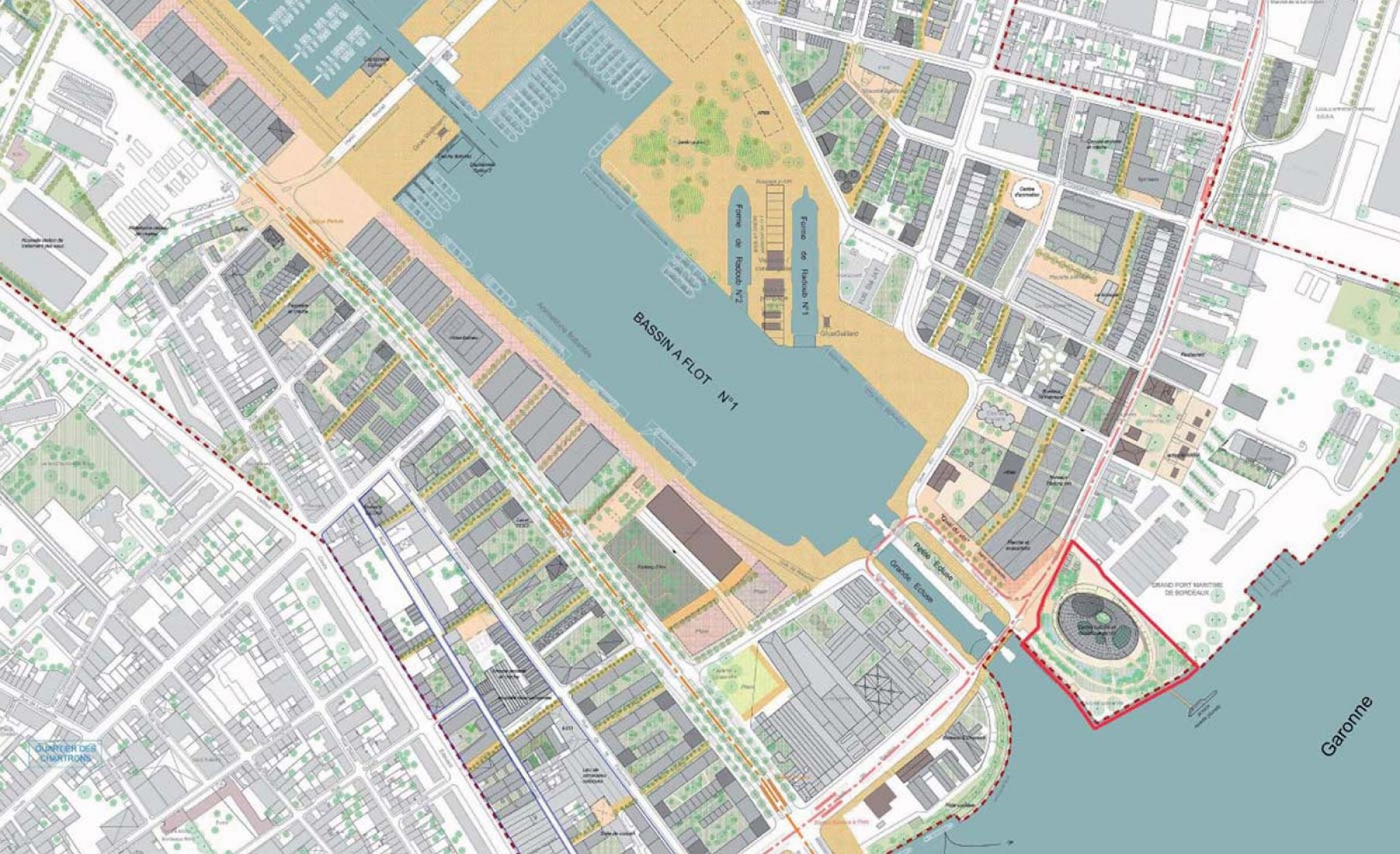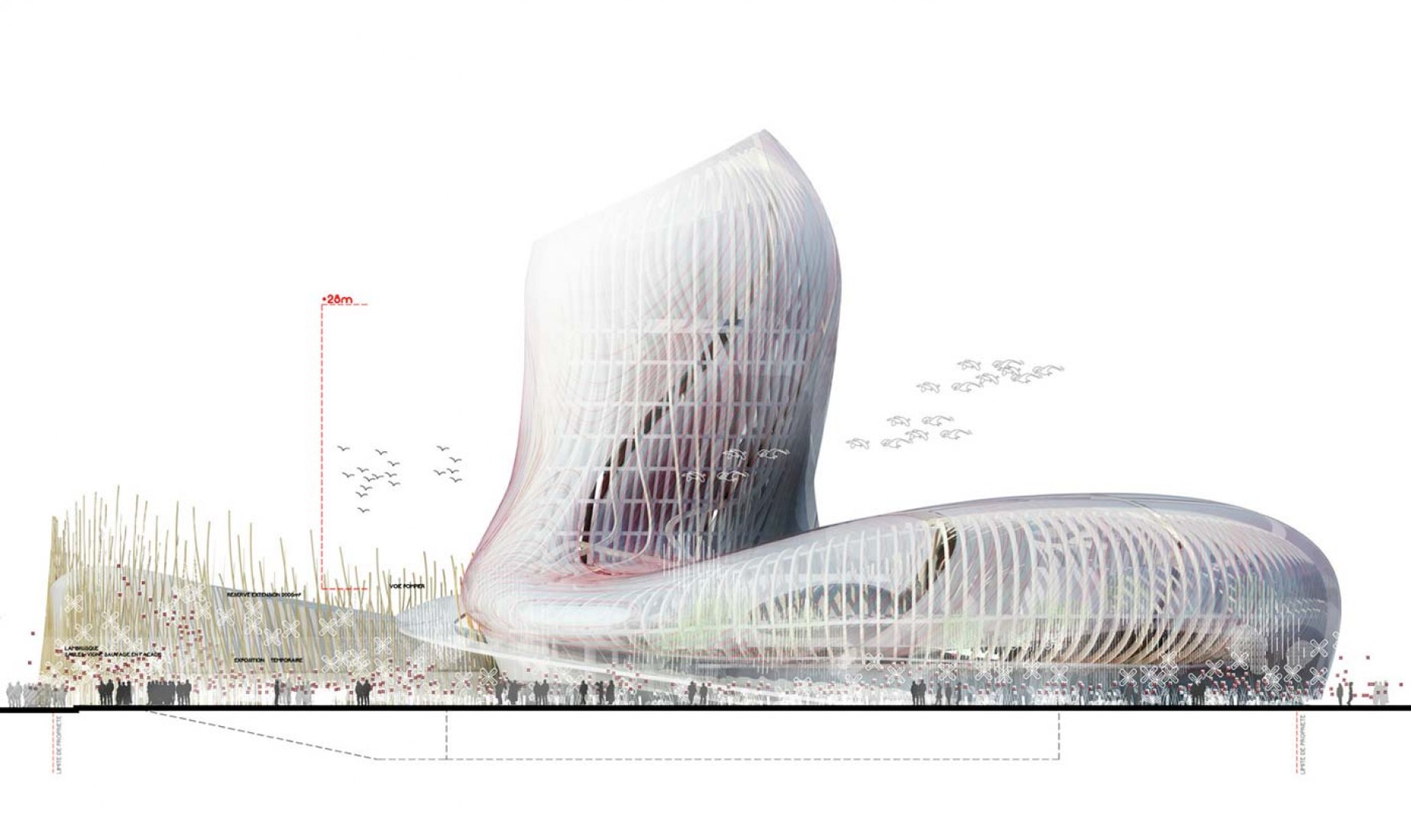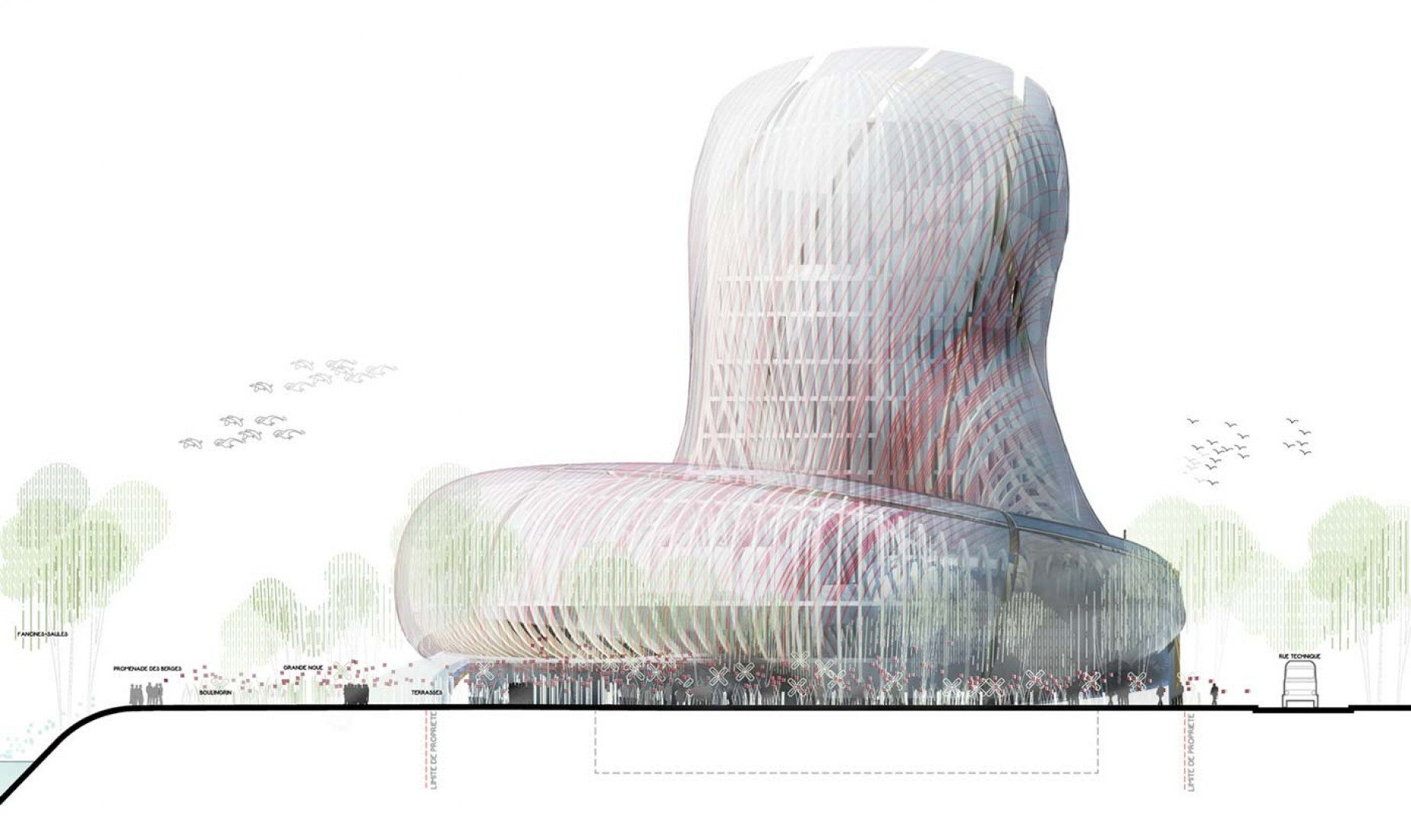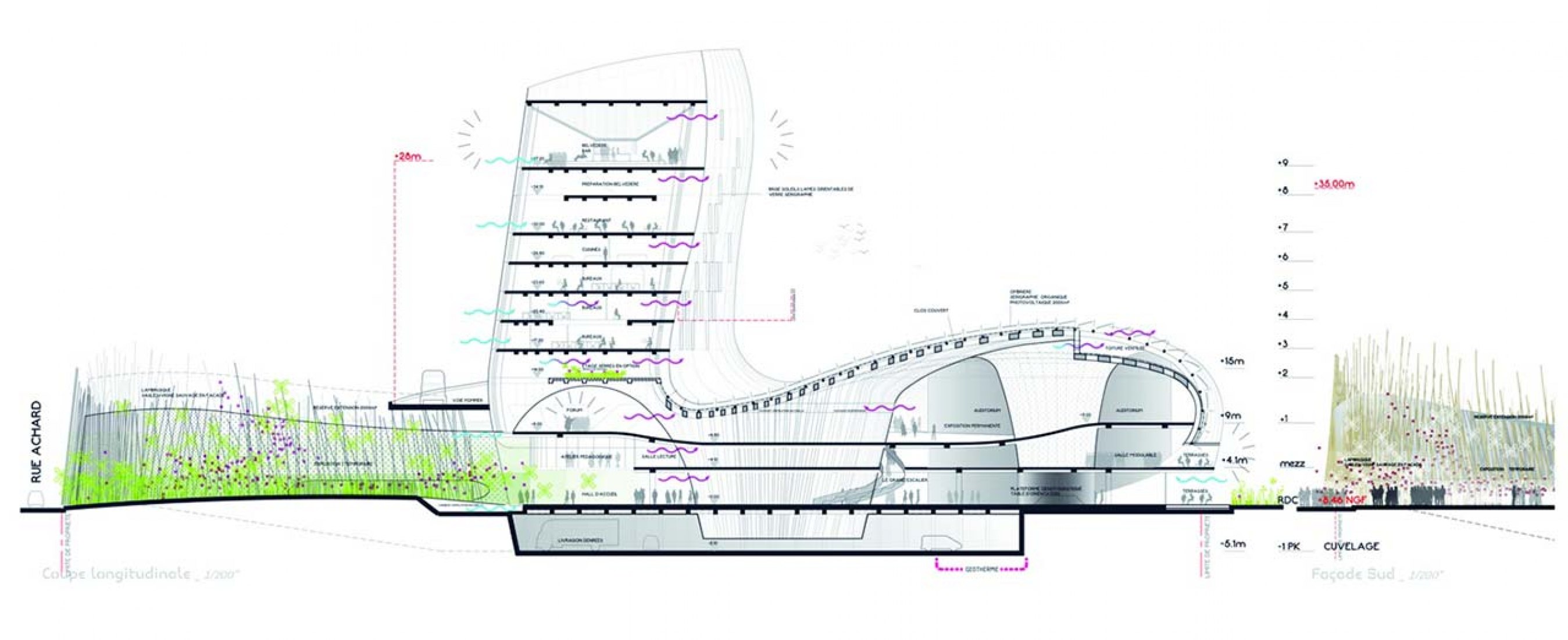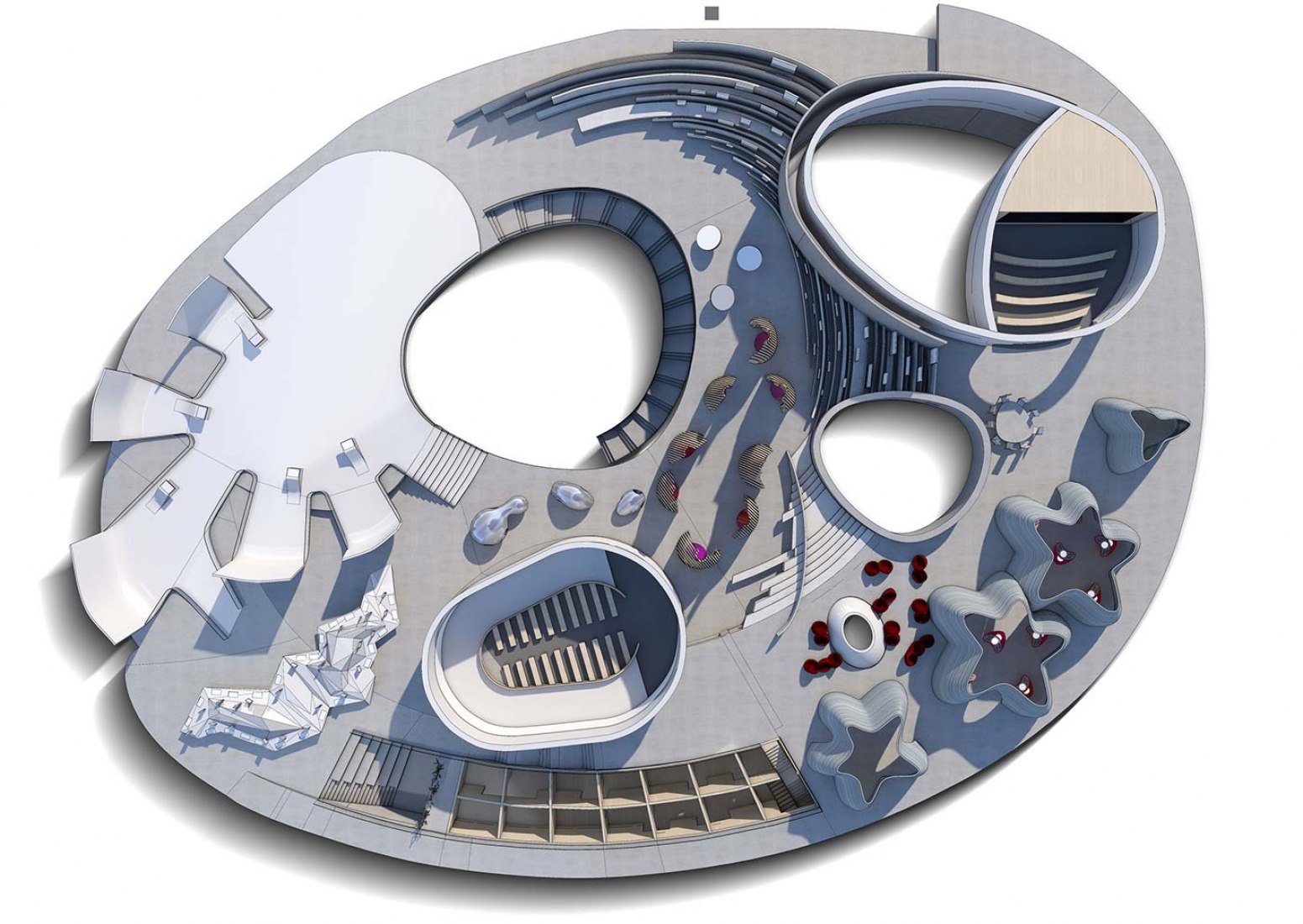Responsible for conceptualising and art directing all elements of this permanent visitor experience, including audio-visual and media elements, Casson Mann’s ambitious scenographic vision and interior concept presents a series of spectacular, innovative and playful displays, that invite visitors to explore the links between wine, culture, history and society, so significant to this area of France, and which are shared by wine-producing nations across the globe.
Spread across an oval floor space of more than 3,000 sqm, 22 different large and small-scale exhibits feature interactive experiences that stimulate the senses – sight, sound, touch, and smell. They range from spectacular helicopter fly-overs of the world’s most stunning vineyards where visitors can literally smell the vines on a perfect spring day, intimate galleries in which visitors can examine the detail of historical documents and artefacts close up, to innovative displays that deconstruct wine making process.
Structured into themes, the tour introduces the visitor to the rich symbolic and cultural capital of wine, and illustrates the ways in which its history, geography, geology, oenology, arts and commerce have shaped the world’s cultures and landscapes throughout history, from 7000BC to the present day.
Description of the project by X-TU
The initial aim of the building’s architecture was to create a genuine bond between La Cité du Vin and the spaces surrounding it through perpetual movement. The very distinctive shape of La Cité reconnects it with its muses: wine swirling in a glass, the eddies of the Garonne, gnarled vine stock, every detail evoking the soul of wine and liquid elements.
Changing with the sunshine or the time of day, the building ‘answers’ the river with its reflections: there are very close parallels with a wine’s constantly changing appearance. The very distinctive shape causes you to look at the river running past from a different perspective. The building’s two entrances on either side create an impression of movement, ebb and flow between inside and outside. One entrance faces the city and the other faces the river. Higher up, the belvedere enables visitors to discover the illuminated city and the surrounding land, almost like a watchtower.
In the eyes of Anouk Legendre, the main exhibition itself follows these flows: wine, the river, the flow of visitors. You pass through the building like a river, with visitors becoming voyagers flowing around the central staircase, perpetuating this impression of movement. Visitors are constantly moving as they experience a virtuous circle of discovery. Each person discovers a new world in a fluid, rotating motion leading to an unusual, limitless destination, like a journey through the meanderings of a cultural landscape which feeds the imagination.
The initial aim was for the building programme to develop in line with the scenography, making the architecture a voyage in itself. Downstairs is therefore a dark world, like a cellar, with the roots of the vines. The ground floor is raw – it is a stepping stone for immersion into the project, a crossing point. The mirror reflections are disorienting and encourage visitors to move upwards towards the light. They feel this light on the patio then follow it through the structure until it finally explodes. There is no fixed route to follow, just worlds to discover. The aim of the experience is to appeal to the imagination. Sometimes the architecture steps back, in other places it reappears.
The wooded arch of the permanent exhibition, the strongest area of La Cité du Vin, is like a varied sky. The sky is everything in winemaking, determining the harvest. This wooden sky rises, undulates and tightens. Once again, this is all about movement. The wooden structure is reminiscent of a timber frame, of boats, of wine on its travels. It is an immersive break with reality, a world of roundness, fluidity and elevation approximating the wine experience. It is not always very clear and not all interpretations are the same, just like with wine. Visitors want to learn something and are in a discovery mind-set triggered by the architecture, which creates the right conditions for them to discover and complete this immersive, initiatory journey.
Anouk Legendre concludes: ‘The building under construction is very close to my original mental image. Its scale is even more impressive than it was on paper. You could describe it as a cocoon with a softness that takes nothing away from its power.’

